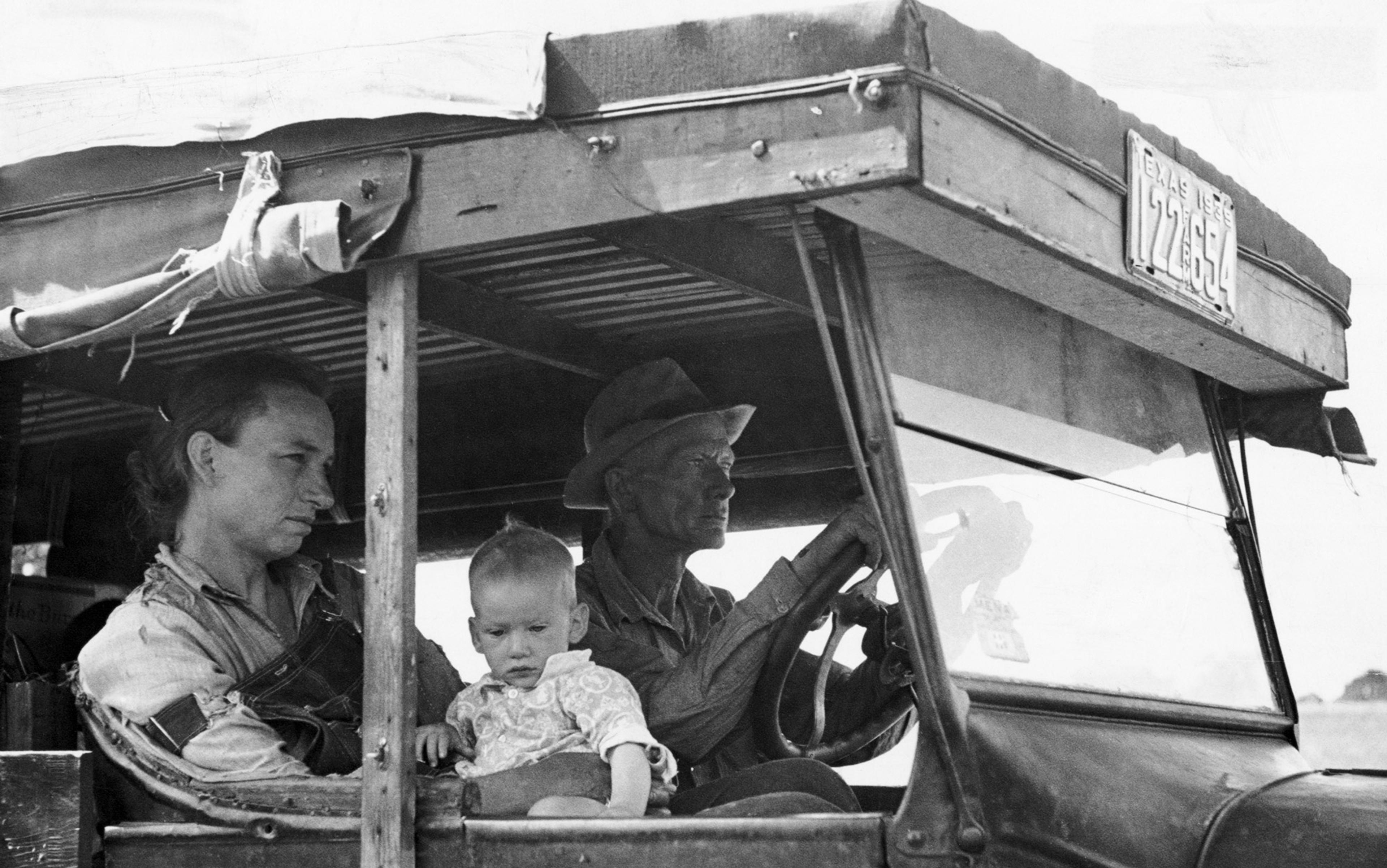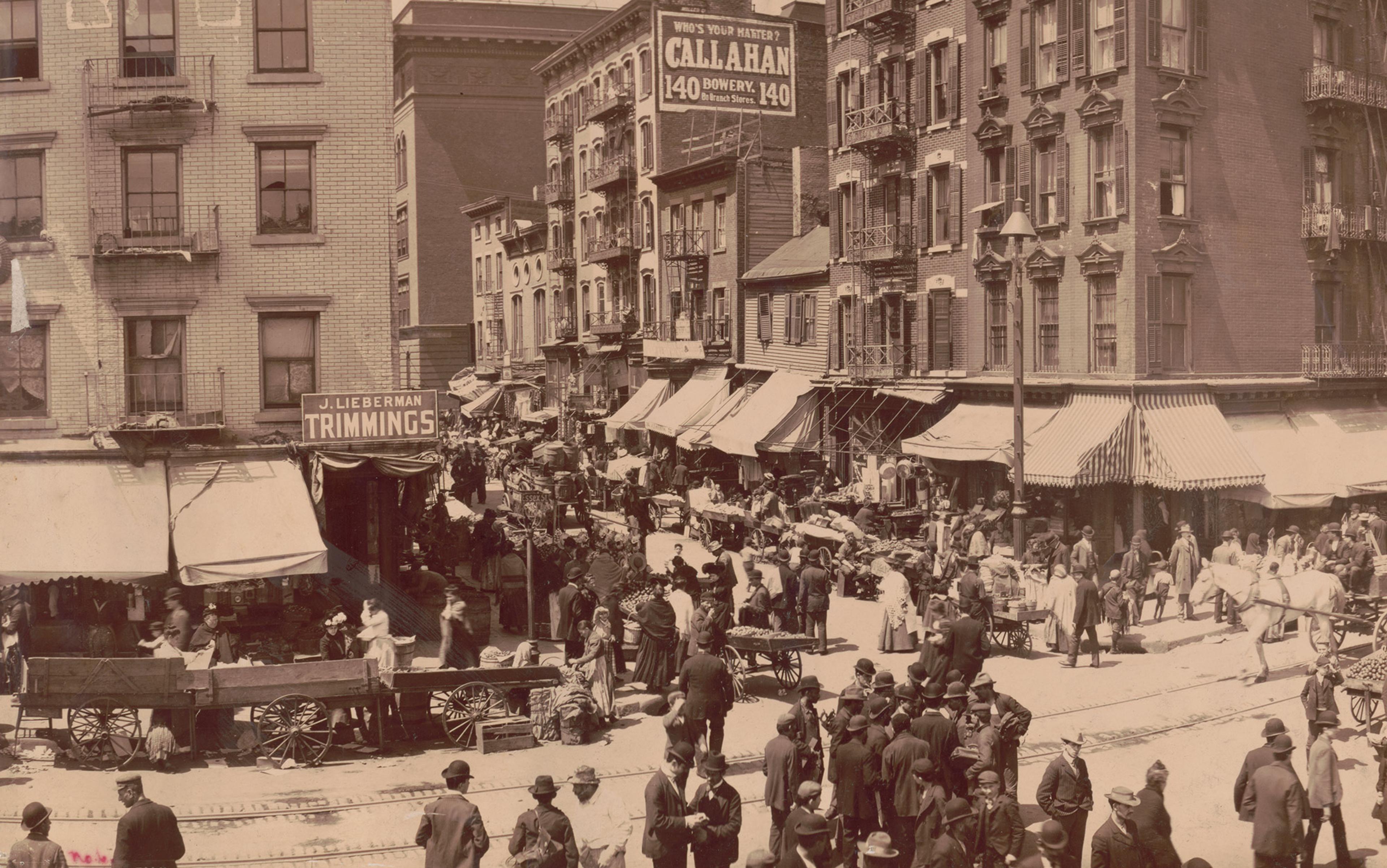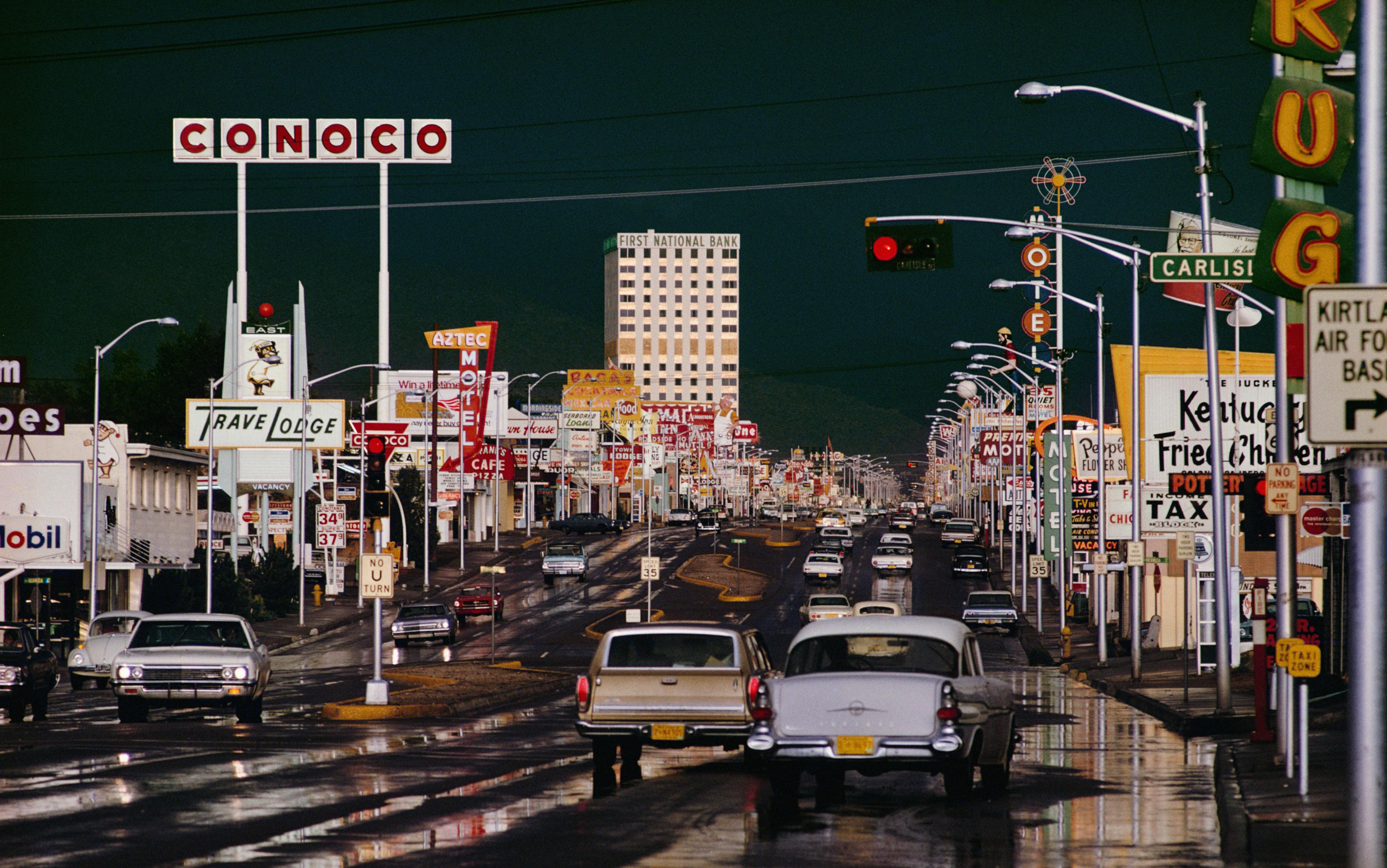In 1971, the great Carole King sang: ‘So far away/ Doesn’t anyone stay in one place anymore?’ Thirty years later, the editors of The New York Times explained that families in the United States are changing because of ‘the ever-growing mobility of Americans’. And in 2010, a psychologist argued that ‘an increased rate of residential mobility played a role in the historical shift’ toward individualism. It’s a common US lament that human bonds are fraying because people are moving around more and more. Americans fear the fracturing of communities that constant moving seems to bring.
Yet when King sang, Americans had been moving around less and less for generations. That decline was even more obvious when the Times editorial appeared in 2001, and it has continued to decline through the 2010s. The increasingly mobile US is a myth that refuses to move on.
One might imagine that the documented increase in settling down would have relieved Americans of their anxieties about transience and the loss of community. But it has not, because most Americans believe that residential mobility is accelerating and that it is a source of social ills. In truth, neither lament nor celebration of this growing rootedness is in order, because the ramifications of a more settled US are not all to be valued. But first of all we must recognise that the US is in the midst of a great settling down – and not breaking apart by never staying put.
The idea that the US was once made up of stable and tight-knit communities is a false portrait that took root in the 1830s and grew in the decades that followed. Of course, some Americans in the 18th and 19th centuries did indeed stay home: the financially secure. But most people – common farm families and ordinary workers, not to mention slaves, servants and immigrants – lived on thin margins. Uncontrollable events such as drought, pests, accidents, epidemics, depressions, conflicts and more often washed away those margins and swept people onto the open road.
Researchers have found creative ways to measure rates of geographic mobility in past centuries. Some have looked simply at how many Americans in any given year lived outside their states of birth. Coming from out of state was relatively frequent in the mid-19th-century but then became much less so until the 1970s. The rate of leaving one’s state of birth then rose again until dropping quite recently. But leaving one’s state of birth is a special type of mobility. Counting those moves captures the many one-time relocations Americans made as the population spread west in the 19th century and then to the Sunbelt in the late 20th century – but by counting only these, we miss the vast majority of moves that people make.
A better sense of how common moving was in the past comes from studies that assessed turnover in local communities. Historians have tabulated how many of the people who were listed for one year in a community record (in a census, city directory, tax roster or voting register) were listed again in the next year’s or the next decade’s record. The answer, from the 18th through the 19th centuries, is almost always relatively few.
For example, in Abraham Lincoln’s Sangamon County, Illinois, about 80 per cent of the households recorded as living there in 1850 could not be found there in 1860. These studies describe a widespread churning of the population, much greater than in the 20th century. There are technical problems with this method of calculating mobility, but it’s most likely an error of underestimating the turnover by not counting people who came and went so rapidly that they were never listed in the first place.
Large-scale immigration in the 1970s of Mexicans, Chinese and others from around the globe didn’t bring a rise in mobility
The evidence that mobility has declined is more robust for roughly the past 65 years, thanks to annual census-bureau mass surveys. Around 1950, about 20 per cent of Americans changed homes from one year to the next. In the 1980s, under 18 per cent did. By the 2000s, under 15 per cent – and now we are approaching annual moving rates of only 10 per cent. About two-thirds of movers do not go far, relocating within the same county, and the frequency of such local moves has dropped by about half since the Second World War. The proportion of Americans who move across county and state lines is considerably lower, but that rate, too, has dropped substantially, from about 6.5 per cent in the 1950s to under 4 per cent now.
This trend toward staying in place has accelerated since 2001. Why? The geographer Thomas J Cooke at the University of Connecticut largely credits the economic crisis, but he argues that mobility would still have declined in any event because of a general societal trend toward ‘increased rootedness’. The economists Raven Molloy, Christopher L Smith and Abigail Wozniak have speculated that perhaps technological changes have made telecommuting easier and therefore moving for job reasons is less necessary. Another explanation offered is that US communities have become so similar in terms of employment that there’s no financial point in moving. But, in short, no clear explanation has yet emerged for what many economists, as I discuss later, consider a problem.
The end of the great 19th-century and early 20th-century migrations to and across the US, when millions of Italians, Poles, Germans and other Europeans came here, would seem to be part of the explanation for mobility’s decline. But the resurgence of large-scale immigration to the US since the 1970s of Mexicans, Chinese and others from around the globe did not bring with it a rise in overall mobility rates. Those rates kept falling. Meanwhile, some scholars point to the rise in homeownership over the 20th century as an explanation for the great settling down, since homeowners move less often than do renters. But the increase in ownership was not as great as the decline in mobility. Moreover, though homeownership rates in the US have dropped by 5 percentage points in the past decade, mobility has continued to decline. Nor can demographic changes, such as a growing aged population, explain the long-term trend.
So what is the cause? My best guess is that the greatest single factor in the great settling down was the increasing physical and economic security of US life.
Thanks to a growing and stabilising economy, spreading affluence, vastly improved public health, the establishment of government institutions from policing to business regulation, and all sorts of ‘safety net’ programmes over several generations – from Social Security to federal disaster assistance – fewer and fewer Americans have been forced to move because of unemployment, floods, the death of a breadwinner, and so on. Greater security also helps account for an apparent shift from the 19th to 20th centuries in who was likeliest to move.
Roughly speaking, in the 18th and 19th centuries, poorer Americans moved much more than did better-off Americans. Whether it was, for example, the younger sons of Colonial New England farmers who had to move further into the wilderness to get their own land, freed slaves searching for decent paying jobs after the Civil War, or textile workers in the late 1800s laid off in slow periods moving back to their parents’ farms, the typical moves of earlier eras were not made by choice. Well-off Americans and their children made fewer, but longer-distance moves, often to pursue yet better opportunities.
Then, in the 20th century, that class gap in moving narrowed as working-class life became more secure. In the same period, the well-off continued or perhaps even accelerated their moving, notably their long-distance moving, as national employment markets developed for professionals. Think of how doctors, lawyers, professors, corporate executives, and people like them, build careers today compared with a century ago – more often by attending colleges far from home and competing for jobs nationally.
New transportation technologies comprise a second part of the explanation for the long-term decline in mobility. The streetcar in its various forms, from trolleys to subways to automobiles, allowed Americans to change jobs without changing homes. In the 19th century, workers generally had to find housing within a couple of miles of where they worked, because employees, unless they boarded with their employers, walked to work. But for 20th-century Americans, fast transportation, together with the telephone, reduced the social pressures for moving. For example, widowed mothers could stay in their own homes longer now that their grown children were a short drive and quick call away.
There are two distinctions to make in order to understand the historical changes in mobility. First, long-distance moves, which are largely driven by career reasons, must be distinguished from local ones, which often result from housing reasons. Second, voluntary moves, which tend to be beneficial, must be kept separate from forced ones, which often are not. Keeping these in mind help us better understand who is likely to move and for what reasons. The consequences of moving depend on the kind of move.
Despite the recent surge in stay-at-home young adults, 20-somethings move more than anyone else, almost one in four of them a year. They move both near and far, as they leave home, go to college, begin new jobs, and start their families. These are, for the most part, life-building moves. Moving rates decline as people age: only about 4 per cent of senior citizens move in a year.
Forced moves, resulting from foreclosure, divorce, job loss and the like, can leave long-term scars
College graduates are much more likely to move across state lines than are Americans with less education, and more than twice as likely as high-school dropouts. But the least-educated are more likely to move locally. These are signs that many of the moves that less-educated Americans make are reactions to problems rather than the grasping of new opportunities. In his book Evicted (2016), the sociologist Matthew Desmond documents the residential reality at the next-to-lowest rung of the socioeconomic ladder: poor, single mothers and their children who haven’t enough income to afford even the worst housing, and who consequently bounce from dilapidated unit to dilapidated unit. (The lowest rung of the ladder is, of course, occupied by the homeless.) Desmond argues that residential instability itself is a major factor in the perpetuation of poverty.
The consequences of moving depend greatly on why people move. In the latest census data, more than half of local movers said that they moved for housing reasons, especially to get a better or cheaper home. Only one in 10 moved because of job reasons, commonly to shorten the commute. Those who crossed county or state lines, in contrast, largely explained the move in terms of work, mainly to start new jobs. So most moves in recent years are voluntary.
For willing movers, the move is typically positive. They face a period of adjustment as they find their way around, try to stay in touch with friends and family, and make new friends. But the net effect is often good – and, for some, positively life-changing. For example, research by the sociologist Rob Sampson at Harvard shows that residents of poor neighbourhoods in Chicago who manage to move out and stay out of their original neighbourhoods fare better than those who stay behind or return to the old community. Other research suggests that members of cultural minorities who move, especially if they move to larger cities, find a wider range of freedom to ‘be themselves’.
Forced moves, on the other hand, resulting from foreclosure, divorce, job loss and the like, can leave long-term scars, as Desmond has documented for the evicted. Children are especially vulnerable. They don’t decide whether and where to move, and they are especially sensitive to their immediate environments. Children who move repeatedly are at particular risk. In one study of adolescents, new students had fewer friends and were less integrated into their schools than those who had been in the community several years. Other research shows that multiple moves in a short time adversely affect children’s mental health. Children who move frequently typically do so because they are in highly unstable families; many live with a single mother and a succession of her boyfriends. While the children’s repeated relocations often result from deeper problems, the moving itself seems to weaken children’s social ties and wellbeing.
Moving doesn’t just affect the movers: there are important consequences for communities too. In general, high rates of residential turnover in a neighbourhood or town undercut local solidarity and the ability of neighbours to coordinate action, such as controlling the behaviour of teens, ensuring child safety, and mobilising politically. High turnover also increases residents’ anxiety. (The pattern is complex, however: in some very disadvantaged neighbourhoods, residential stability can actually accentuate problems by reinforcing troublesome local norms – eg, don’t talk to the police.)
Given such evidence, the great American settling-down should be building solidarity, sociability, and community-feeling in neighbourhoods across the nation. But that has not happened. If anything, Americans are more likely to ignore their neighbours these days in favour of their relatives and friends outside the neighbourhood than generations ago. One reason is the march of wives and mothers out of the home and into the workplace from the 1950s. Fewer people are home during the day, and more people are focused on their jobs and co-workers. Also, the very transportation and communication advances that allow people to stay in their homes as they change jobs cuts down on neighbourly sentiment. People dine out with friends that live miles away rather than invite a neighbour over for dinner. They gossip by Skype with a friend on the other side of the globe rather than chat over the fence. Today, staying in place can go together with freedom from place.
The widespread value Americans place on community continuity is evident in the escalating conflicts over gentrification in booming neighbourhoods such as central San Francisco and Brooklyn. Activists not only complain about the damage done to those who are forced out by rising costs, but also about the loss of a ‘traditional’ community as newcomers change its culture. For example, the author Michael Henry Adams recently lamented in The New York Times that the Harlem of black churches, stores and art – the Harlem of the Harlem Renaissance – was being erased by incoming whites. In rural America, there remains widespread concern about the out-migration of young people and the in-migration of city commuters, as there has been for many generations. Americans value the settled community.
The myth of increasing rootlessness persists as it fits so well into a bigger picture of ‘modern’ versus ‘traditional’ society
But for some, casting off from home is how they can best realise themselves. And in the wake of the slow recovery from the Great Recession, some economists suggest that we have, in fact, too-settled a society. Unemployment and poverty are concentrated in particular places (the median house price in the Silicon Valley is more than 12 times that in the Youngstown area of Ohio). Americans of working age, they argue, should flee those pockets, be they rural hollows in coal country or inner-city ghettoes. Social insurance and supports that allow people to stay home and stabilise communities might be a social problem.
In the end, most Americans should find the settling down of the nation a positive change. Yet they seem unaware of it. Every time I have written about this trend – the first time was in the 1970s – the reaction I get is of amazement. How could that be so, since everyone ‘knows’ we live in an ever-more mobile society? Why the surprise, especially given that every year the census bureau releases, and the press reports, the latest data on the drop in mobility?
Perhaps the myth of increasing rootlessness persists because it fits so well into the bigger picture Americans have of ‘modern’ versus ‘traditional’ society, fitting comfortably alongside other myths such as rising isolation, moral decay, mental disturbance and alienation. As unintuitive as it might seem to most Americans, it is simply a myth that no one stays in one place anymore. We are staying longer and longer.






